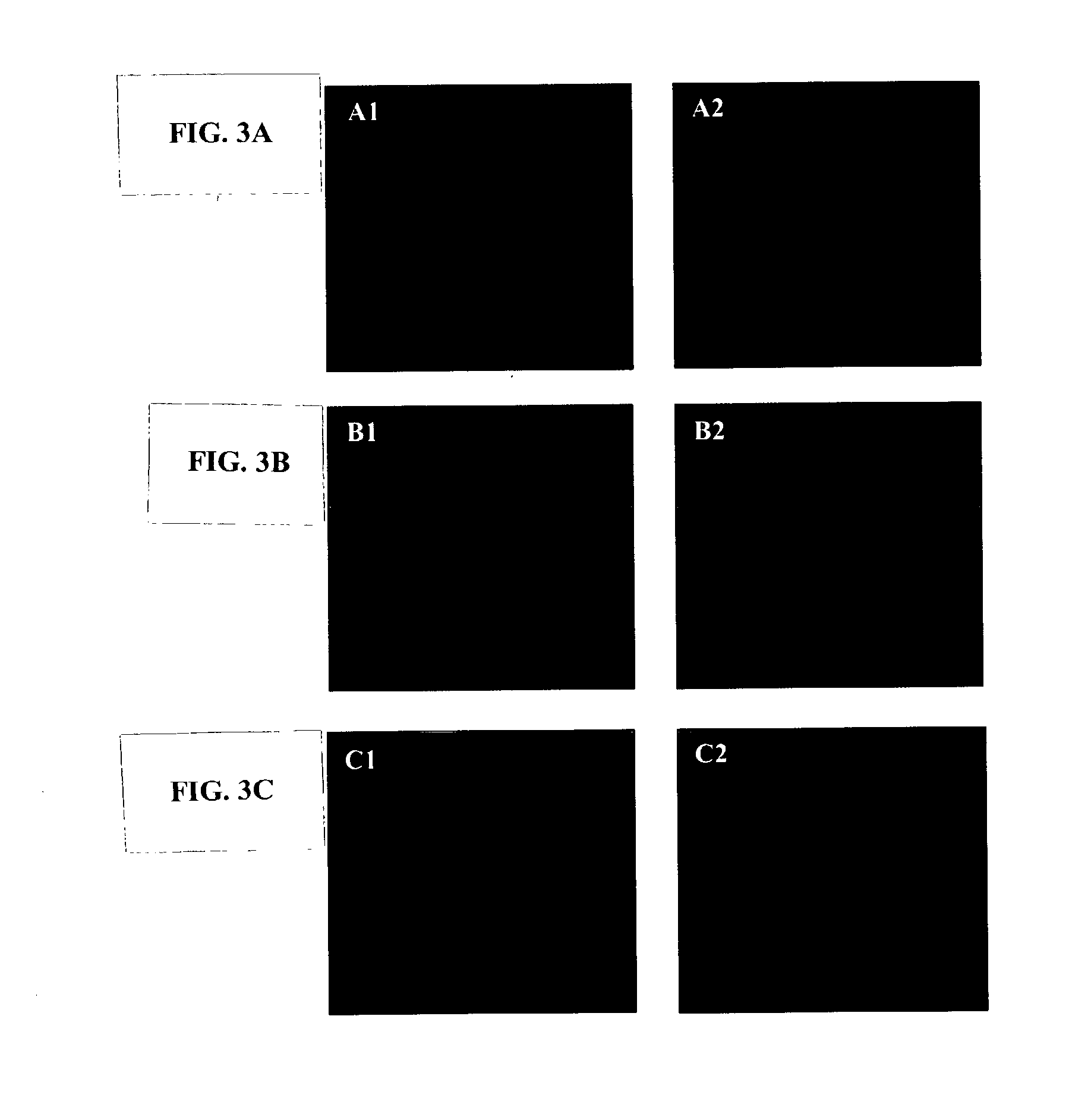Nuclear transfer embryo formation method
a technology of nuclear transfer and embryo, applied in the field of nuclear transfer embryo formation method, can solve the problems of enucleation of reconstructed embryos, inability to fully enucleate cytoplasts, and inability to fully enucleate cytoplasts, and achieve the highest rate of blastocyst development, confirm comparative in vitro development potential, and increase the nt development rate
- Summary
- Abstract
- Description
- Claims
- Application Information
AI Technical Summary
Benefits of technology
Problems solved by technology
Method used
Image
Examples
example 3
Activated Bovine Cytoplasts Produced by Induced Enucleation Support Development of Nuclear Transfer Embryos In Vitro
[0128] Poor efficiency of somatic cell NT has been associated with the preparation of developmentally competent enucleated cytoplasts. Induced enucleation (IE) of mouse oocytes has been shown to support enhanced term development of cloned mice. This study characterized the kinetics and phenotypic progression of bovine oocytes subjected to IE, and evaluated their developmental competence to support NT embryo development in vitro. In vitro matured (26 h) oocytes were denuded, activated (5 pM ionomycin, 5 min, then 10 .mu.g / mL cycloheximide, 5 h) and cultured for up to 5 h post-activation (pa). Oocyte enucleation was induced by demecolcine (0.4 .mu.g / ml, DM) exposure at 30, 60, 90 and 120 min post activation for various time periods (1 to 4.5 h). Activation rates and meiotic progression of control and DM treated oocytes (n=31-49 / gp) was evaluated at 5 hpa by immunofluores...
example 4
Induced Enucleation of Mouse and Goat Oocytes Kinetic and Phenotypic Characterizations
[0130] In general, the rates of successful somatic cell cloning of animals are poor, in part due to low efficiency in the production of competent cytoplasts when prepared by mechanical enucleation of MII oocytes. A method to induce enucleation of activated oocytes has been developed that supports enhanced rates of development of cloned mice to term. This study was designed to characterize the kinetics and progressive phenotypes observed during induced enucleation (IE) of activated mouse and goat oocytes. In vivo ovulated mouse oocytes (B6D2F1, n-959; CF 1, n=999) and in vitro matured goat oocytes (n-163) were denuded activated (7% ethanol) and incubated for up to 3.5 hr in KSOM. Enucleation was induced by continuous exposure to demecolcine (0.4 g / ml) commencing at 0-30 min post-activation. Non-demecolcine treated activated oocytes served as controls (n=50 / rep). At selected time points oocytes (n=11...
PUM
| Property | Measurement | Unit |
|---|---|---|
| time- | aaaaa | aaaaa |
| time- | aaaaa | aaaaa |
| time- | aaaaa | aaaaa |
Abstract
Description
Claims
Application Information
 Login to View More
Login to View More - R&D
- Intellectual Property
- Life Sciences
- Materials
- Tech Scout
- Unparalleled Data Quality
- Higher Quality Content
- 60% Fewer Hallucinations
Browse by: Latest US Patents, China's latest patents, Technical Efficacy Thesaurus, Application Domain, Technology Topic, Popular Technical Reports.
© 2025 PatSnap. All rights reserved.Legal|Privacy policy|Modern Slavery Act Transparency Statement|Sitemap|About US| Contact US: help@patsnap.com



